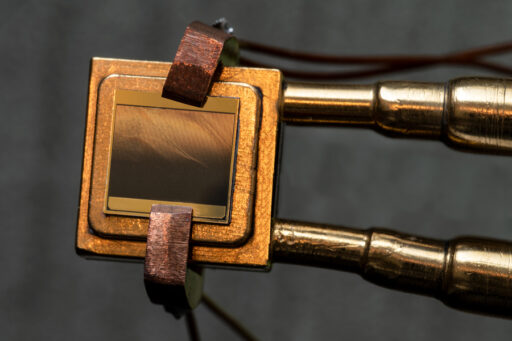
The funding comes through the Electric Program Investment Charge (EPIC) program and the Department of Energy’s Advanced Research Projects Agency-Energy (ARPA-E) through the Duration Addition to electricitY Storage (DAYS) program
Antora’s thermal battery stores renewable energy as heat in blocks of solid carbon, which the company says enables cost-effective energy storage and outputting high-temperature industrial heat and electricity on demand at costs competitive with fossil fuels.
Converting stored heat back to electricity has traditionally required the use of conventional heat engines like steam turbines, which have limitations around cost, efficiency, complexity, and scalability. TPV technology is meant to efficiently enable the conversion of heat into power with rapid ramp rate, low cost, and no moving parts — achieving the dual heat and power output needed to replace the fossil fuels used in today’s processes for sectors like food & beverage, paper products, chemicals, steel, and cement.
For decades, TPV technology met neither the efficiency threshold required to compete with traditional heat engines nor the manufacturability threshold required to produce in a cost-effective manner the technology at scale. Antora says it has met both of these critical thresholds, demonstrating heat-to-electricity conversion efficiencies greater than 40%, and opening the world’s first dedicated manufacturing line for TPV cells earlier this year. This funding will further Antora’s progress in scaling TPV production.
Last year, MIT and the National Renewable Energy Laboratory (NREL) announced their design of a thermophotovoltaic cell, and said it could outperform traditional steam turbines and could someday enable a fully decarbonized power grid.
On average, steam turbines reliably convert about 35% of a heat source into electricity, with about 60% representing the highest efficiency of any heat engine to date. However, the system’s moving parts are not able to withstand temperatures higher than about 3600 degrees Fahrenheit.
That’s why scientists have studied heat engines with no moving parts, that could potentially work efficiently at higher temperatures. TPV cells passively capture high-energy photons from a white-hot heat source and convert them into electricity. MIT and NREL’s design can generate electricity from a heat source between roughly 3,400 to 4,300 degrees Fahrenheit.
The researchers planned to incorporate the TPV cell into a grid-scale thermal battery system. The system would absorb excess energy from the sun and store that energy in heavily insulated banks of hot graphite. When the energy is needed, such as on overcast days, TPV cells would convert the heat into electricity, and dispatch the energy to a power grid.
TPV cells can be made from semiconducting materials with a particular bandgap — the gap between a material’s valence band and its conduction band. If a photon with a high enough energy is absorbed by the material, it can kick an electron across the bandgap. The electron can then conduct, and thereby generate electricity, all doing so without moving parts or motors.
Until this point, MIT researchers said most TPV cells have reached efficiencies of around 20%, with the record at around 32%. That performance largely is a because they have been made of relatively low-bandgap materials that convert lower-temperature, low-energy photons, and therefore convert energy less efficiently.
The new TPV cell is fabricated from three main regions: a high-bandgap alloy, which sits over a slightly lower-bandgap alloy, underneath which is a mirror-like “layer of gold.” The first layer captures a heat source’s highest-energy photons and converts them into electricity, while lower-energy photons that pass through the first layer are captured by the second and converted to add to the generated voltage.
Any photons that pass through this second layer are then reflected by the mirror, back to the heat source, rather than being absorbed as wasted heat.
Last month, Antora announced its first large-scale thermal battery manufacturing facility, which will produce thermal battery modules for the company’s first major commercial projects. In September, Antora launched its thermal battery at an industrial site near Fresno, California — a factory-made, road-shippable module discharging zero-emissions heat and zero-emissions power.